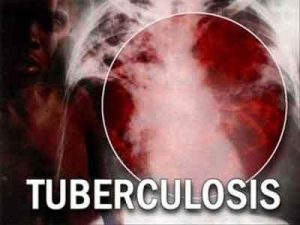- Home
- Editorial
- News
- Practice Guidelines
- Anesthesiology Guidelines
- Cancer Guidelines
- Cardiac Sciences Guidelines
- Critical Care Guidelines
- Dentistry Guidelines
- Dermatology Guidelines
- Diabetes and Endo Guidelines
- Diagnostics Guidelines
- ENT Guidelines
- Featured Practice Guidelines
- Gastroenterology Guidelines
- Geriatrics Guidelines
- Medicine Guidelines
- Nephrology Guidelines
- Neurosciences Guidelines
- Obs and Gynae Guidelines
- Ophthalmology Guidelines
- Orthopaedics Guidelines
- Paediatrics Guidelines
- Psychiatry Guidelines
- Pulmonology Guidelines
- Radiology Guidelines
- Surgery Guidelines
- Urology Guidelines
Rheumatoid arthritis patients on TNF Inhibitors at increased risk of Tuberculosis

Turkey: Rheumatoid arthritis patients on TNF Inhibitors at increased risk of Tuberculosis, finds study.
Treatment with TNF inhibitor (TNFi) increases the risk of developing tuberculosis (TB) compared to non-users, finds a new study from Turkey.
The study, published in the Journal of Clinical Pharmacy and Therapeutics found that among 2117 patients treated with a TNF inhibitor (TNFi) the risk of TB was 6 fold higher in those treated with a TNFi compared to non-users.
Volkan Aydin, Department of Pharmacology, Marmara University School of Medicine, Istanbul, Turkey, and colleagues conducted this retrospective cohort study to determine the risk of developing TB due to the use of anti‐TNF‐α in patients with rheumatologic diseases (RDs) on a nationwide basis.
This retrospective cohort study included patients with rheumatoid arthritis (RA), ankylosing spondylitis, juvenile idiopathic arthritis or psoriatic arthritis (PsA) that treated with or without TNFI. The calculated the 2-year RR of TB after TNFi. Among 413 500 rheumatic patients, 2117 received TNFi.
Also Read: Breakthrough- Researchers develop new inhaler for tuberculosis treatment
Key Findings:
- Four patients among anti-TNF-α users developed TB compared to 128 patients in anti-TNF-α-naïve group (189 vs 31 cases per 100 000 patients, respectively.
- The 2-year risk of TB (RR) was 6.07 (95% CI, 2.25-16.42).
- The risk was higher in men (RR 5.39; 1.69-7.17), adults (6.12; 2.26-16.55) and RA (5.70; 1.41-23.08) and PsA (13.46; 1.58-114.40).
Also Read: Statins significantly reduce risk for active tuberculosis
These findings are similar to other studies showing a higher risk of TB with TNFi users.
"This study is the first prescription‐based nationwide study to suggest an elevated RR of TB in a comparably younger population with a broad spectrum of RDs managed with any approved anti‐TNF‐α drug in Turkey," write the authors.
Another report from Romania assessed the incidence of active TB and the efficacy of TB prevention measures. (Citation source:https://buff.ly/2vYGpHj)
Patients were divided into 3 groups according to LTBI screening: tuberculin skin test (TST) with a positive threshold of either 10 mm (group TST1), or 5 mm (group TST2), and QuantiFERON®-TB Gold test (group QFT).
Among 550 patients included (305 RA, 42 PsA, 203 AS). The number of TB cases/time of exposure to TNFi (person-years, PY) was 8/593.5, 9/1044.0 and 3/555.3, respectively, accounting for an incidence of 1348.0, 862.1 and 540.2 cases per 105 PY.
The number of active early TB cases (in the first year of TNFi) was relatively few - only 3/8, 1/9 and 1/3.
Overall there were less TB cases in the QFT group, probably due to the reduced duration of exposure to TNFi.
In this cohort study, TB was more likely to occur after 1 year of TNFi treatment, rather than early, suggesting the need for ongoing monitoring and TB prevention measures, especially in high-risk areas and populations.

Disclaimer: This site is primarily intended for healthcare professionals. Any content/information on this website does not replace the advice of medical and/or health professionals and should not be construed as medical/diagnostic advice/endorsement or prescription. Use of this site is subject to our terms of use, privacy policy, advertisement policy. © 2020 Minerva Medical Treatment Pvt Ltd